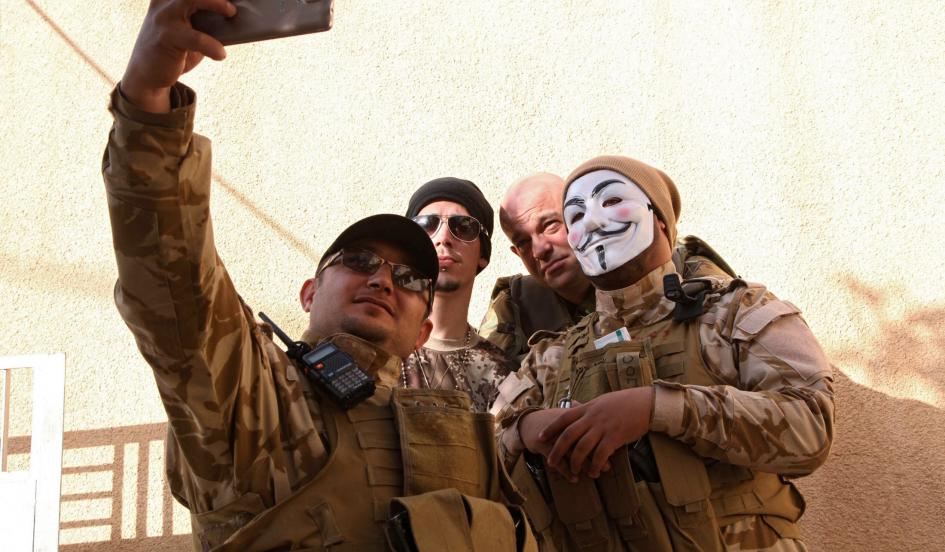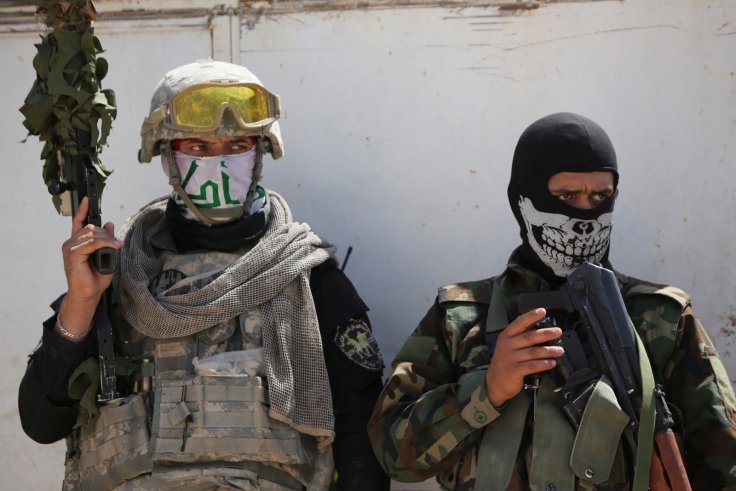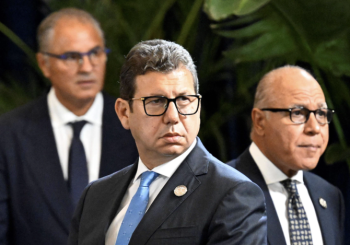By Christa Wägemann
Since the crushing fall of Mosul in northern Iraq to ISIS in June 2014, Shi’a militias, with the aid of neighboring Iran, have come to play the leading role in the battle for Iraq. Though this is not a new phenomenon, militias in Iraq have made considerable strides cementing themselves as a political instrument to gain power and legitimacy.
In 2014, the Iraqi religious Shi’a leader Ayatollah Sistani pronounced a fatwa (religious ruling) for Iraqis to defend their country against ISIS, leading local groups to take up arms and mushroom into more new groups. Since then, Iraqi militias have reorganized themselves to be regulated under an umbrella organization called the Popular Mobilization Front (PMF), led by the National Security Advisor, Falih al-Fayyadh.
As of yet however, al-Fayyadh’s role appears to be solely administrative leaving the PMF under the control of Iraq’s clergy and political parties. According to a local source, there are now 65,000 volunteers, including 17,000 Sunni tribesmen, who all operate in the Popular Mobilization Front under the Iraqi Commander in Chief, Prime Minister Haider al-Abadi.
The militia alignment

The militia-political alignment in Iraq predates the 2014 Mosul defeat and has become a growing political instrument used to wield power in the country. Sectarian militias have moved to the forefront and replaced a strong nationally unified military body. As a result, Shi’a militias like the Badr Brigade, Asaib al-Haq, and Hizbollah in Iraq have been retrained and reorganized primarily by the Iraqi government.
The leaders of these militias are led through pre-existing leaders such as Abu Muhandis and Qais Al-Khazali. These men both have histories of participating in terrorist attacks against U.S. soldiers, as well as working closely with Iranians, particularly the special Qods force of Iran’s Revolutionary Guards.
Militias in Iraq are now instruments of power, ideology, and identification; they often compete with each other for government resources or about political agendas. Iraq is becoming an example of how the region is experiencing a new regional order that is based on sectarian identity marching to the drumbeat of Iranians’ ideologies and hegemonic goals.
Since the recent nuclear agreement between the West and Iran, Iranian support of Shi’a militias in Iraq has increased, and will continue to do so as long as opportunities allowing Iran to openly pursue its regional objectives and preserve its political influence in Iraq remain. Iran sees itself as the driving force of a Shi’a Islamic awakening and a revival of a unified Islamic identity.
As the invasion and threat of ISIS persists, Iran and Iraq’s main goals are to keep ISIS at bay as long as possible, while protecting the Shi’a religious sites within Iraq that are integral to Iran and Shi’ism.
Keeping Iraq Fighting Against ISIS
In past months, leader of the Badr Brigade Hadi al-Ameri was quoted saying that currently there are only three things keeping Iraq unified to fight against ISIS: the religious fatwas issued by Ayatollah Sistani, the fact that Iraqis respond to the fatwas, and that Iranians are supplying aid. As Iran anticipates the nuclear deal going into effect –lifting economic sanctions that have crippled its economy since 2010 – the country will soon have an increased cash flow to pour into the Shi’a militias, ultimately increasing Iran’s influence in the political spectrum of Iraq.
Through Iran’s support, the Shi’a militias have maintained popular legitimacy among the masses in Iraq as they advocate desirable social and political agendas that the Iraqi government has failed to provide itself. Iran has continued to exploit Iraq’s weak democratic system and uses these proxy militias to penetrate the political environment, inserting its own agenda.

Since 2011, Iraq’s formal government institutions have continued to follow an extensive patronage system that tends to unjustly favor and reward sectarian militias. A local source in Iraq who asked to remain anonymous, stated that the integration of Shi’a militias like the Badr Brigade, are now formally incorporated into the government and are on payroll. These institutional practices may be hard to reverse in the future and create a cause for concern, as converting war practices into everyday political bureaucracy only perpetuates a more violent and unstable environment within the already fragile Iraqi government.
The Institute for the Study of War reported that after the recent fall of the Iraqi city Ramadi, Iranian- backed militias actively created different political strategies than that of Prime Minister Abadi, in order to undermine the Iraqi government’s plan and to gain control of the military situation on the ground. Their goal: to install into the Iraqi government political parties that represent the militias permanently. Given today’s world, it is of no surprise that these militias have their own social media accounts through which they promote their political agendas and propaganda, not only to receive attention but to recruit the younger generation.
A local analyst in Iraq further explains that through community-based sectarian approaches militias are able to gain legitimacy on the ground. Militias recruit members in a straightforward process; applicants submit their CVs just like for any normal job, and then go through a screening process to ensure they are not already loyal to another militia. Once accepted, recruits are sent to the holy cities of Najaf or Karbala for training, usually by an Iranian or Lebanese leader, and are paid approximately $US 600-750 per soldier.
As the region continues to be gripped with increasing warfare and sectarianism, the nuclear deal with Iran and its recovering economy will allow Iran to participate in more regional foreign policy paths. There are two foreseeable agendas the future could bear out. First, as Iranians increase their influence in the region, and conflict likely becomes unavoidable, Iranian popularity could nosedive. The likelihood of such scenario derives from the populations’ growing weariness, which could push Iran to cooperate more in the region. Second, if any peace deals are to be made in the future -i.e. in Syria, Yemen, or Iraq- Iran will have to be included at the diplomatic table.
The question will then remain if Iran will be able to shape its foreign policy and militia support into a something that promises a future beyond warfare and ideological divisions.






Comments (7)
ccn2785xdnwdc5bwedsj4wsndb
[…]Every the moment in a though we decide on blogs that we read. Listed below are the most recent web sites that we select […]
[…] Militias in Iraq: Leading the Fight Against ISIS Despite Divisions – Since then, Iraqi militias have reorganized themselves to be regulated under an umbrella organization called the Popular Mobilization Front (PMF), led by the National Security Advisor … CVs just like for any normal job … […]